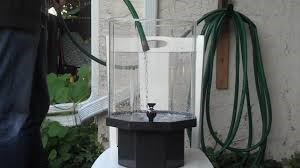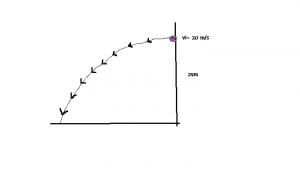This is a lesson for teaching students how to use the quadratic formula with the use of a SMART Board. How the students learn to use the quadratic formula is broken down into three steps: identifying the coefficients (a, b, and c) in a quadratic equation, correctly plugging them into the quadratic formula, and executing the formula correctly. What the teacher is trying to accomplish is attempting to get the students to learn a new mathematical skill by the use of technology. The teacher hopes that students will be more engaged in this lesson rather than writing on a regular whiteboard. You can view this lesson by following the link:
LessonPlanTemplate(1)
- Integrating Technology in the Mathematics Curriculum
How technology is integrated into the curriculum of mathematics is by using a electronic white board, otherwise known as the SMART Board, to conduct a lesson and do practice problems with the students. The SMART Board will allow multiple students, maximum of 6 at a time, to do physical work on a given problem using their hands or a pen. Also, the SMART Board has access to a presentation website called the SMART Exchange. This website contains mathematical presentations that teachers can access and use in their classroom and the students can work on problems from the presentation physically. This piece of technology could help students reach the Common Core State Standard by getting the students more motivated and excited to participate in the activities offered. Because students are more interested in their computers and phones, this is a touch screen whiteboard that is much like some of their phones. There are high hopes to get students more engaged and motivated when using this piece of technology.
- Participation in Community of Mathematics Educators
SMART Boards are giving the community of mathematical educators a much easier and mess free experience when conducting a lesson. When using the SMART Board, the teacher can create her or his own presentation or find one on the SMART Exchange. If a teacher wants to add anything to the presentation they can right in the moment by just writing on the SMART Board. Also, your days or erasing chalk or expo pens and writing with chalk or expo pens are over. The SMART Board is a mess free board. This is a great piece of technology that is easy to use, easy to display lessons, and mess free.
- Ability to Contribute to Program and School Improvement
The SMART Board will help contribute to school improvement and to the program by getting students to be more engaged and by giving teachers a better way to communicate lessons to students. Students already have a hard time paying attention in class because they are distracted by their own pieces of technology. In using an electronic whiteboard that has a touch screen, there are high hopes to get students more interested in participating class and using the SMART Board to solve problems. Teachers can also choose lessons that best fit their classroom. Based on the students’ knowledge and skill level, the teacher can find a lesson on the SMART Exchange website that best helps students learn. Or the teacher can create their own lessons on the SMART Board. The SMART Board can display easy to read instructions, practice problems, or pictures. For example, if a teacher need to show a picture of a graph but also write down what the different parts of the graph are, the SMART Board can easily display all the information needed or the teacher can display the picture through the SMART Board and write on it what the parts of the graph are. SMART Boards have the ability make teaching more effective and could get students more engaged in participating during class.
- Planning for Mathematical Understanding
Learning targets will be discussed with students before the lesson begins. The teacher will set up the SMART Board presentation form the SMART Exchange website. Students have had practice with squaring binomials and solving quadratic expressions by factoring. Pre-assessment will consist of giving the students a quadratic that cannot always be factored into two binomials. This will show them that there is another way to solve quadratic equations. The teacher will then assess if the students can identify the coefficients, a, b, and c, in the quadratic equation and determine if the students can correctly plug them into the quadratic formula. Students will be asked to identify a, b, and c of a quadratic equation. One student can volunteer to come to the board and physically write on the board what a, b, and c are. If the students can correctly plug in the coefficients into the quadratic formula, then they can move on to executing the formula to find the zeros of the quadratic equation. Another student will be able to come to the board and plug a, b, and c into the quadratic equation correctly. After a few practice trials of identifying a, b, and c and correctly plugging them into the quadratic formula, the teacher will move forward to effectively solving for the zeros of the quadratic equation. Multiple students can come to the board to solve multiple problems displayed. The students can explain what they are doing as they are going through the problem solving process. Their peers can voice helpful tips or advice if it is needed. After the class activity with the SMART Board in completed, the students will be given a worksheet with more practice problems on them to help master this new skill. This is a step by step process to ensure each student can first identify the correct coefficients, plug them correctly into the quadratic formula, and to correctly execute the equation to find the zeros.
- Planning to Support Varied Learning Needs
Students have a lot of trouble grasping new mathematical concepts and skills. To accommodate for a large difference in mathematical ability, the teacher will use a SMART Board and a SMART Exchange presentation to help students grasp this new skill. Because it is a new technology, the teacher hopes that the students will be more engaged and will have more fun coming to the board. The teacher will go over step by step how to use the quadratic formula to ensure that students know how to use it correctly and have students come to the board to practice. Also, using the SMART Exchange will give teachers presentations or practice problems to display. It gives the teacher extra tools to help her students learn. The students will also work individually and at their own pace to complete the problems on a worksheet. Students who have misconceptions will work with the instructor and with peers in order to guide the student in the right direction and get immediate feedback.
- Using Knowledge of Students to Inform Teaching and Learning
Because students have had practice with squaring binomials and solving quadratic expressions by factoring, they need to see a quadratic equation that cannot be factored back into two binomials. The teacher will break up the lesson into smaller steps so the students can keep up and learn how to use the quadratic formula more easily. Pre-assessment will consist of giving the students a quadratic that cannot be factored. This will show them that there is another way to solve quadratic equations. The teacher will then assess if the students can correctly identify a, b, and c in the quadratic equation and determine if the students can correctly plug them into the quadratic formula. If the students can correctly plug in the coefficients into the quadratic formula, then they can move on to executing the formula to find the zeros of the quadratic equation. It is more effective to break up each step in using the quadratic formula because students can be easily confused of how to identify and plug in the coefficients into the formula and can make an error trying to execute the equation. By breaking up the process into smaller steps, students can better grasp how to correctly use the quadratic formula. Also because the students have a hard time participating in the activity, the teacher will use a SMART Board to conduct her lesson. By using the technology in the process of learning, the teacher hopes that the students will be more engaged in the activity. They get to use a touch screen whiteboard to do their work on that is easy to use and mess free. The students use technology everyday; since the teacher knows that the students enjoy using touch screens and using technology, she hopes that the students will have more fun and be more engaged in the lesson.
- Planning Assessment to Monitor and Support Student Learning
There are no formal rubrics for this lesson. The learning targets are as follows:
- I can identify when to use the quadratic formula.
- I can identify the correct coefficients, given by the quadratic equation, and plug them into the quadratic formula correctly.
- I can execute the quadratic formula and find the zeros of the quadratic equation.
In this lesson, the formative assessment will consist of the students coming to the SMART Board to physically identify a, b, and c, correctly plug them into the quadratic formula, correctly execute the formula to find the zeros, and given practice problems on a worksheet to continue to master this new skill. The teacher will be observing the students while they quietly work. The teacher will comment on the students’ work to help guide them in the right direction during the problem solving process. At the end of the class period, the worksheet will be handed into the teacher for further assessment. The teacher will then evaluate the worksheets to determine what the students still need to work on.




